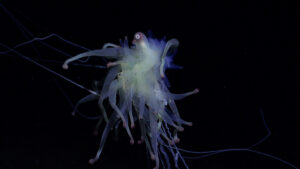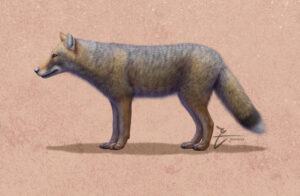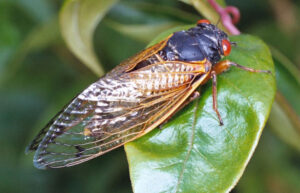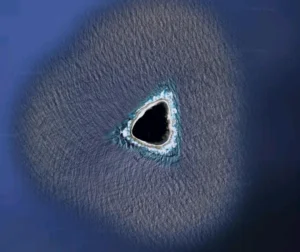A passion for the natural world drives many of our adventures. And when we’re not actually outside, we love delving into the discoveries about the places where we live and travel. Here are some of the best natural history links we’ve found this week.
The North Pole is on a Journey: The climate crisis is moving the Earth’s axis, literally as well as metaphorically. And the locations of the North and South Poles are moving further and more swiftly than ever. We aren’t sure how this happens, but the distribution of water on Earth is part of it. Melting glaciers added enough water to cause an eastward polar drift in the 1990s. The speed of this drift from 1995-2020 was 17 times higher than it was pre-1995. Though we don’t notice this change in our daily lives, it indicates the effect that human activity has on the planet.
A miracle cave
One Of The Earliest Sites Of Human Activity: Wonderwerk Cave in South Africa contains some of the earliest evidence that early hominids made tools and lit fires. Its stone tools date back to the Paleolithic Era. “Our human ancestors were making simple Oldowan stone tools inside the Wonderwerk Cave 1.8 million years ago,” said one researcher. Wonderwerk translates to “miracle” in Afrikaans.
The Search for Genghis Khan helps Polar Bears: Eight hundred years after his death, the location of Genghis Khan’s tomb remains a mystery. Now, the technology used to look for it is helping polar bears. “I randomly tuned into the radio one night and heard an expert talking about the use of synthetic aperture radar (SAR) to look for Genghis Khan’s tomb,” said Tom Smith of Brigham Young University in Utah. Smith learned that the military uses SAR to detect enemy camps and that it may also help find avalanche survivors. He and his team are now using the technology to locate polar bear dens. As fewer than 26,000 polar bears remain getting data on their denning sites can help keep drilling and other intrusions away from those locations at critical times.

Donkeys dig water holes. Photo: Petra Kaczensky
Wild Donkeys and Horses Dig Water Holes: Settlers introduced wild horses and donkeys to North America over 500 years ago. Often, these domestic animals trample vegetation, erode creek beds, and out-compete native species. But Erick Lundgren has discovered that they also dig beneficial water holes. He studied Arizona’s Sonoran Desert for three years and discovered that the holes significantly increased available surface water. “Once wells were dug, other animals came. In droves.” Lundgren said. Everything from songbirds to mountain lions made use of the newly dug waterholes.
Songs to a vanished people
Understanding the Beothuk: Beothuk is the name given to the language and extinct people who lived in present-day Newfoundland for 2,000 years. A woman named Shanawdithit, who died in the early 1800s and may have been the last Beothuk, drew a number of maps and drawings. A dozen of these still exist. They detail the end of her life and show British settlers capturing her aunt. Her uncle — the last-known Beothuk chief — and her cousin were shot and killed trying to get her back. Recently, the story of Shanawdithit became an opera. “She was a woman who persevered,” said Marion Newman, who sang the role. “There’s so much power in that.”
Tyrannosaurs Were Social Animals: A new study suggests that the famous Tyrannosaurus and its kin may have been social carnivores like wolves, rather than solitary predators. A fossil site showed the remains of several dinosaurs that all died around the same time. “[This suggests] that tyrannosaurids were capable of interacting as gregarious packs,” said researcher Philip Currie.

A regenerated sea slug body over 20 days. Photo: S. Mitoh and Y. Yusa/Current Biology 2021
Growing an entirely new body
Sea Slug Heads Can Grow a New Body: Ecologists Sayaka Mitoh and Yoichi Yusa have reported “whole-body” regeneration in a species of sea slug. The heads of Elysia marginata sometimes separate themselves from their bodies. Within a few hours, they are munching on algae and within 20 days, they have regrown a new body. The researchers noticed this by chance. “We were really surprised to see the head crawling,” Yusa said. As it can take hours to detach the body from its head, scientists do not think that they use this to escape predators. Instead, they think it is a way to fight parasites that attach to their bodies.
Searching for the Universe’s Most Energetic Particles: Cosmic rays were discovered in the 1960s. Since then, finding out where they come from has eluded scientists. Though we all them rays, they are actually subatomic particles whizzing through space at almost the speed of light. No one knows what accelerates these particles to such incredible speeds. One theory is that they issue from massive stars as the stars die, but it has been almost impossible to trace their origin. Now, by studying particles called neutrinos, scientists may be able to pinpoint where the cosmic rays are coming from.
Scientists Scour the Amazon for the Next Pandemic: Researchers at Fiocruz, a branch of Brazil’s Ministry of Health, are monitoring local animal populations and human patients to try and detect zoonoses –- diseases that may pass from animals to humans –- before they “spiral out of control”. Many researchers suspect that many dangerous new pathogens come from tropical rainforests. As human populations move closer to these formerly wild areas, “the risk of spill-over skyrockets.”






